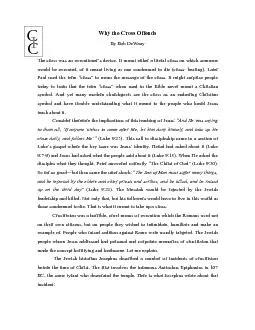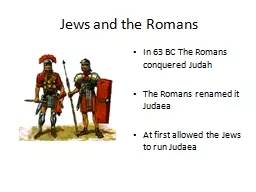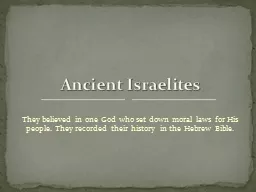PDF-And indeed many Jews there were who complied with the king’s comm
Author : ellena-manuel | Published Date : 2015-09-14
The Jews were very concerned about the proper burial of their dead By hanging bodies on crosses even if that was not where they had died Rome desecrated the Jewish
Presentation Embed Code
Download Presentation
Download Presentation The PPT/PDF document "And indeed many Jews there were who comp..." is the property of its rightful owner. Permission is granted to download and print the materials on this website for personal, non-commercial use only, and to display it on your personal computer provided you do not modify the materials and that you retain all copyright notices contained in the materials. By downloading content from our website, you accept the terms of this agreement.
And indeed many Jews there were who complied with the king’s comm: Transcript
Download Rules Of Document
"And indeed many Jews there were who complied with the king’s comm"The content belongs to its owner. You may download and print it for personal use, without modification, and keep all copyright notices. By downloading, you agree to these terms.
Related Documents














